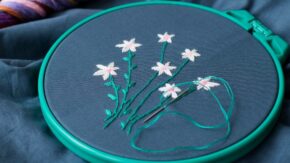Ceramics and Glass Crafts refer to the art and skill of creating various objects, such as pottery, sculptures, glassware, and stained glass items, using clay and glass as the main materials. These crafts often involve shaping, firing, and manipulating these materials to produce functional or decorative pieces, combining creativity and craftsmanship in their production.
Ceramic crafts are objects created using clay and other ceramic materials, which you fire at high temperatures to harden them and make them more durable. What you make can be decorative or functional and includes a wide variety of items like pots, tiles, dishes, and the like.
As you might guess, glass crafts and art is the technique of making items from glass. You can shape the glass by using various methods to create different colors, shapes, and textures, producing a huge selection of objects that can be both functional and beautiful. Using glass, you can make beads, jewelry, glassware, and even stained glass windows.
Engaging in ceramic and glass crafts promotes optimism, concentration, and innovation while reducing stress. These creative activities also offer physical benefits, such as improved hand dexterity and strength, and encourage social interaction, enhancing overall quality of life.
To learn ceramic and glass crafts, start by researching and gathering information. Consider taking classes, both in-person and online, and join workshops with experts. Practice regularly, seek inspiration, experiment, and learn from mistakes. Utilize books, attend art shows, and maintain patience and persistence throughout your creative journey.
You’ll need a range of materials and tools to create objects from glass and ceramics, including naturally occurring raw materials like silica, flint, sand, soda ash, and limestone. You’ll also need a suitable kiln in which to heat your raw materials and a suitably appointed space to work in.
Keep reading to learn everything you need to know about getting involved in the fabulous crafts of ceramics and glass!
What Are Ceramic Crafts?
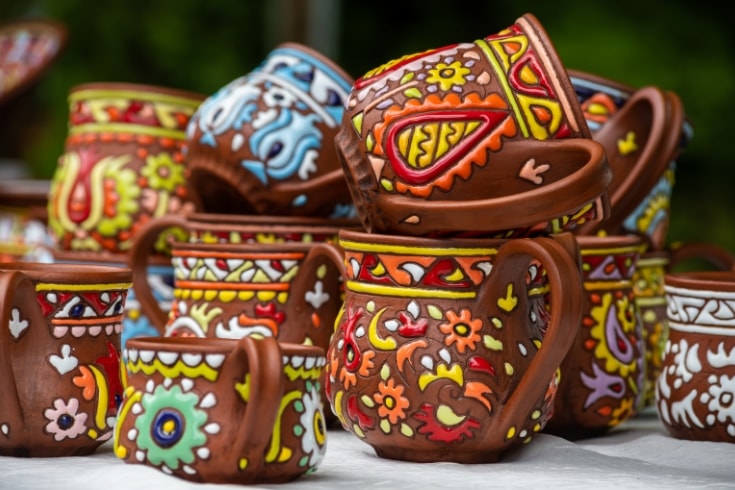
Ceramic crafts are artworks made using ceramic materials like clay. These pieces can take many forms, including artistic pottery, figurines, and functional items like tableware and tiles.
People have been creating ceramic art for millennia. In fact, archaeologists recently discovered ceramic human figurines, animals, balls, and slabs in Czechoslovakia dating from at least 24,000 BC. These early ceramics were fashioned from a mixture of animal fat and bone combined with fine clay-like material and bone ash.
What Are The Different Types Of Ceramics Used For Crafting?
Modern ceramics can be made using many different materials, including porcelain, stoneware, bone china, and clay. So, you have plenty to choose from!
Here’s an overview of the different types of ceramics used for crafting.
Porcelain
Porcelain is often used to make elegant, refined items like dinnerware and vases. This material is typically renowned for its translucency, strength, and whiteness, and it’s also non-porous, meaning that you can create a glass-like finish when the piece is fired.
You can enrich porcelain’s delicate appearance with intricate, detailed designs to create gorgeous gifts for your family and friends or to sell and generate extra income.
Ball Clay
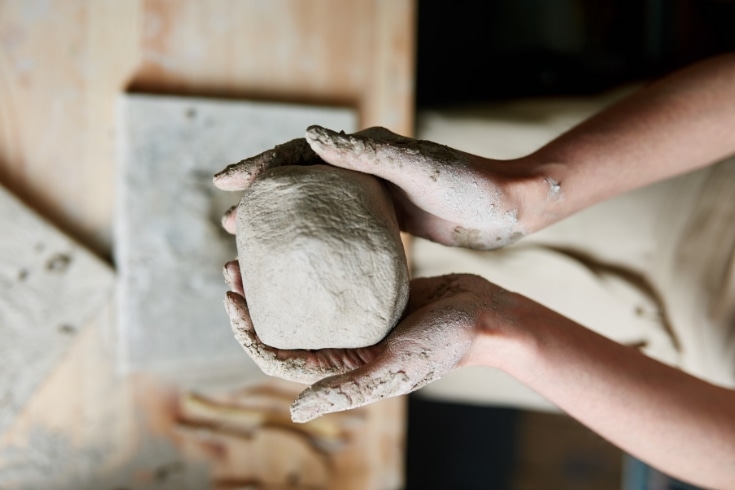
Ball clay is generally used to make pottery, tiles, and sanitaryware.
This particular type of clay is sticky and highly plastic, which makes it ideal for shaping and creating details in your crafting projects. On the downside, ball clay is renowned for shrinking when fired, although the final product is extremely strong and durable.
Titanium Carbide
Titanium Carbide is mostly used in industrial applications, such as manufacturing cutting tools, rather than for crafting, and it’s renowned for its extreme strength and durability. This clay can withstand incredibly high temperatures and is recognizable for its characteristic metallic luster.
Polymer Clay
Polymer clay doesn’t dry out when exposed to the air, and you need to cure or bake it to harden the material, which can be done in your home oven. This type of clay is generally used for creating small sculptures, jewelry, and the like. It comes in a vast array of colors and can be shaped with a very high level of detail, making it an extremely popular choice for crafters.
Stoneware Clays
Stoneware clay is typically used to make durable objects like bowls, mugs, and other dinnerware items. These clothes are fired at very high temperatures, creating a vitrified ceramic material that is scratch-resistant, strong, and non-porous.
Depending on the specific type of stoneware clay and the firing process you use, your finished products can come in a wide range of colors and textures.
Bone China
Bone china is a variety of porcelain made using bone ash, which gives the material a distinctive whiteness and translucent quality. Objects made from bone china are usually extremely strong while being lightweight and thin, making this the perfect medium for creating high-quality, expensive, elegant teaware and dinnerware.
Glass-Ceramic
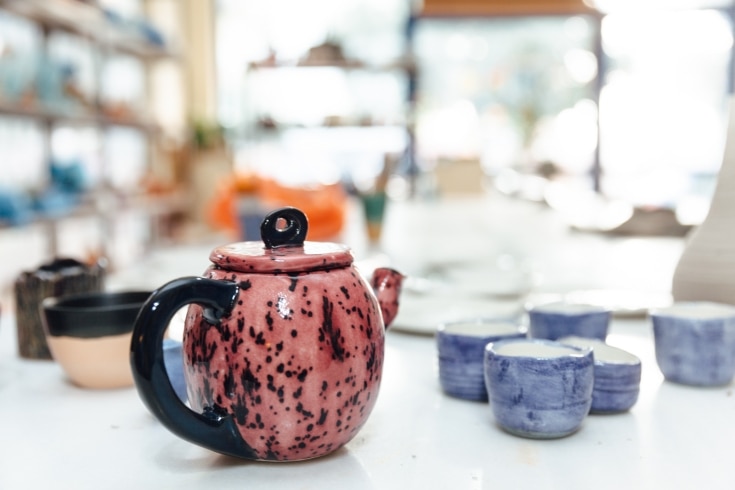
Glass-ceramic is extremely resistant to thermal shock and is therefore used to make craft cookware like casserole dishes and stove tops that can withstand rapid temperature changes. This material is smooth and can be opaque or translucent in appearance.
Kaolinite
Kaolinite is a clay mineral that’s the main component in kaolin clay and is used to make fine, high-quality porcelain and china.
Earthenware Clays
Earthenware clays have been used for centuries to craft ceramics and pottery, and their rich, warm color and rustic look make the material a popular choice for tableware and decorative pieces.
This form of clay is fired at lower temperatures, producing a porous, soft, less durable material, although you can glaze it to make it watertight.
Zirconium Dioxide
Zirconium dioxide, or zirconia, is mainly used to make technical ceramics, such as dental ceramics and cutting tools, because of its chemical resistance and high fracture toughness. However, you can also use this material to create detailed, intricate, and durable pieces where strength and wear resistance are essential.
Terracotta
Terracotta is a distinctive red or orange-colored porous earthenware clay that’s been around for thousands of years and is commonly used to create pottery, sculptures, and tiles. If you want to make your creation watertight and more decorative, you can add a colored glaze.
Fire Brick
Although you don’t generally use fire brick to create pieces of artwork, it can withstand high temperatures, making it ideal for use in the construction of ovens, fireplaces, and furnaces. So, you could use this material to make a suitable kill for firing other types of ceramics.
Bentonite
Bentonite is a very versatile clay material that’s composed of the mineral montmorillonite and is typically used in crafting as a plasticizer for clay objects.
What Are The Different Types Of Ceramics Crafts?
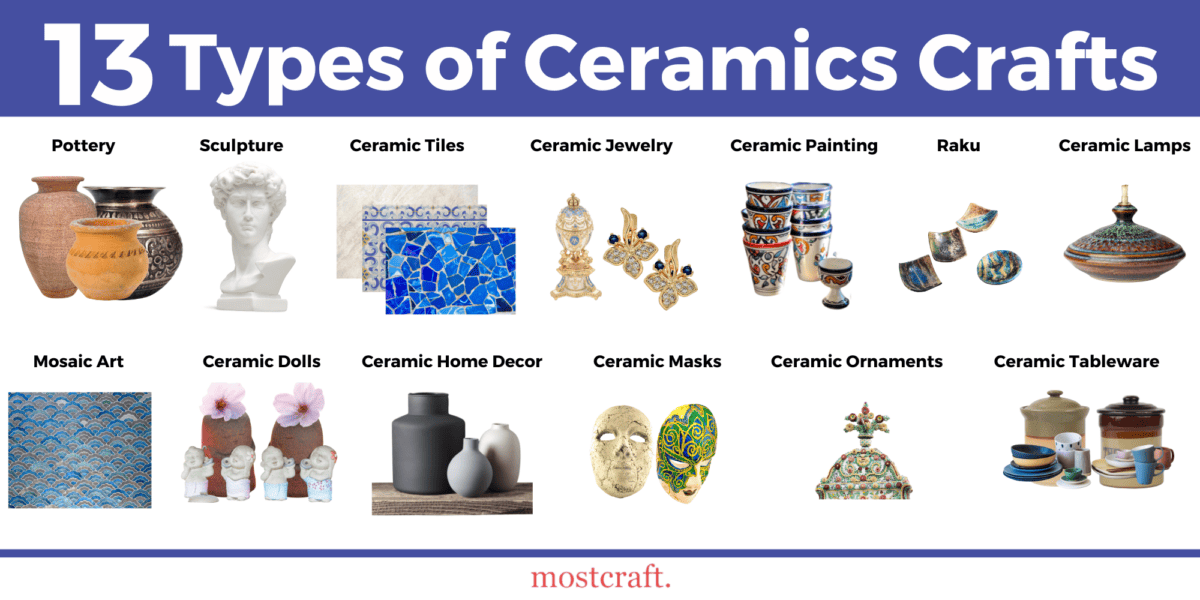
If you decide to take up ceramic crafting as a hobby, there are so many different types of ceramic crafts to consider you’ll be spoiled for choice!
Here’s an overview of what’s available in ceramic crafting.
Pottery
Pottery is one of the oldest forms of ceramic craft and has long been used to make household pieces like pots, bowls, and vases.
The main materials used to make pottery are different types of clay, sometimes with additives mixed in to change the texture or color of the finished article. Once the item you’re working on has been shaped, it must be fired in a kiln to harden, and you might also want to add glaze to protect the piece and give it color.
Sculpture
Sculpting in ceramics mostly involves creating three-dimensional artworks from different types of modeling clay to produce a variety of colors and textures. Once your work is finished, you must fire the piece in a kiln to harden it and give it durability. You might also want to paint or glaze your piece to create a unique look and finish.
Ceramic Tiles
You can use ceramic tiles as surface coverings for practical and/or decorative purposes. These tiles are usually made from clay, which you shape into flat, thin pieces before firing them in a kiln to harden them. You can then glaze or paint the tiles to protect them from moisture so they can be used in bathrooms, kitchens, or outside.
Ceramic Jewelry
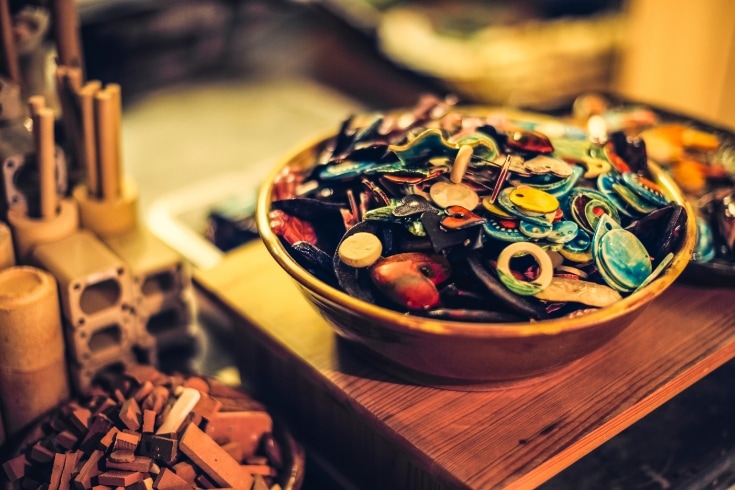
Ceramic jewelry can be just as beautiful as jewelry made using gemstones! Crafters make specific ceramic elements using fine, smooth clay that’s shaped and then fired and incorporate them into unique pieces of jewelry that sometimes include semi-precious stones and metals.
Ceramic Painting
If you’re a talented artist, you can incorporate your skill into the craft of ceramic painting. The materials you’ll need for this craft are your ceramic creations, ceramic paints, or underglazes, which you apply to your ceramic piece immediately before firing.
Raku
Raku ware is a highly distinctive form of ancient Japanese pottery that was traditionally used to make tea bowls.
In the traditional Japanese process, the piece is fired at a low temperature, removed from the hot kiln, and allowed to cool in the open air. However, the modern Westernized version of raku involves firing the ceramic at a high temperature and cooling it in an open-air container containing combustible material. That gives the pottery a huge variety of colors and surface textures, making this an extremely popular craft with amateur potters.
Mosaic Art
Mosiac art uses small ceramic tiles, known as tesserae, which are fixed to the surface of an object, wall, or floor using glue or mortar and can be grouted to fill in any gaps between the pieces.
This art form was especially popular in Roman times when it was used extensively to decorate temples, bathhouses, and wealthy homes. Today, mosaics are an extremely popular ceramic craft that’s rather like creating your own giant, beautiful jigsaw.
Ceramic Dolls
As it sounds, ceramic dolls are typically small, human forms created from some kind of ceramic material. You can decorate your doll with paint, real hair, and fabric outfits, making a fabulous gift for a lucky child.
Ceramic Lamps
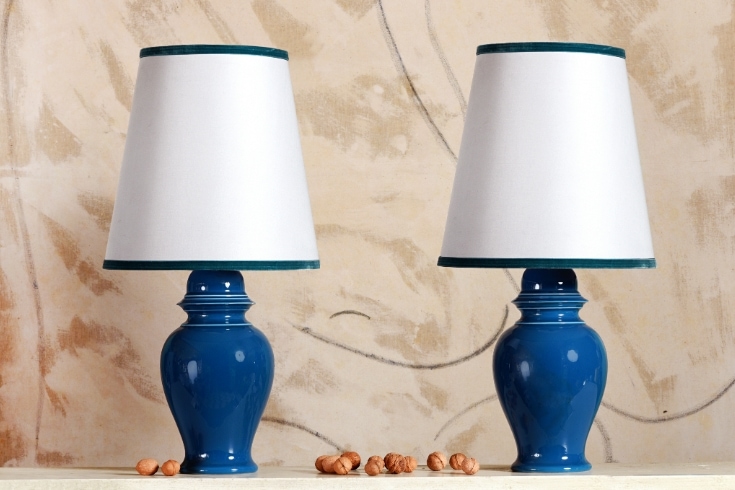
You can make a table lamp from various kinds of ceramic material by shaping the base and firing it in a kiln. Paint or embellish the lamp to make it truly unique and fit the electrical component and bulb to light up your home.
Ceramic Home Decor
You can use basic ceramic techniques and various materials to create home decor items, such as wall art, vases, and figurines. Why not try incorporating ceramic painting into the mix to make your work really stand out?
Ceramic Masks
A ceramic mask is a decorative or ceremonial item that you make by shaping a piece of clay into a face-like form. The mask must be fired to harden it and then it can be painted, glazed, or embellished to emphasize or enhance the features. These ceramic crafts are often used by amateur dramatics companies and the like.
Ceramic Ornaments
Ceramic ornaments are typically small, decorative items for display around your home or to hang on your Christmas tree. These ornaments are made from fine clays, fired, and then decorated with paints, glazes, or other embellishments of your choice.
Ceramic Tableware
Ceramic tableware includes items like bowls, plates, cups, and teapots that you create from ceramics. You can use various types of clay, typically shaped on a potter’s wheel or through molding, which you then fire and glaze. Ceramic tableware is usually intended for practical use and often features painted or carved designs.
What Are Glass Crafts?
Glass crafts are individual works of art, decorative pieces, or functional items that are mostly or completely made of glass. This form of craft can range in size from small pieces of jewelry and ornaments to vast wall hangings and stained glass windows.
What Are The Different Types Of Glass Used For Crafting?
There are several different types of glass that you can use for glass crafts, and we go over those in more detail below.
Soda-Lime Glass
This form of glass accounts for around 90% of all manufactured glass, including bottles, jars, and windowpanes. Soda-lime glass or soda-lime-silica glass is not generally used for crafting.
Borosilicate Glass
Borosilicate glass can withstand sudden temperature changes without breaking, thanks to the boron trioxide used to make it. This type of glass is typically used in cookware, lighting, and cookware because of its heat resistance, and is also used by crafters.
Silica Glass
This form of glass is made from silicon dioxide, which has a very high melting point and excellent chemical stability, making it the ideal medium for crafting objects with fine detail and high precision. Silica glass is also used to make laboratory equipment and spectacle lenses.
Phosphate Glass
Phosphate glass is usually used for specialty applications, such as bioactive glasses and optics, although crafters sometimes use this type of glass for making intricate pieces.
What Are The Different Types Of Glass Crafts?
There are lots of different types of glass crafts you could take up, including fused glass, mosaic glass, beadmaking, and stained glass.
Here’s an overview of the many glass crafts you might fancy trying.
Stained Glass
We’ve all seen the beautiful stained glass windows on display in churches and cathedrals, so why not have a go at making one yourself?
To create a stained glass window, you will need colored glass sheets, copper foil, lead came, or a solder and soldering iron. You’ll also need a range of tools for cutting and shaping the pieces of glass to include in your design.
Fused Glass
If you want to work with fused glass, you will need a kiln in which to melt the glass pieces to join them together to create a decorative object. Crafters use this method to make jewelry, glassware, and decorative pieces.
To create fused glass, you will need kiln paper, compatible glass pieces, and a kiln.
Mosaic Glass
As previously mentioned, mosaic glass art involves assembling tiny pieces of colored glass, known as tesserae, to create a picture or pattern. Mosaics can be used to create wall hangings and decorative flooring.
The main materials you will need for mosaic craft work are glass tesserae, grout, adhesive, and a base to apply your mosaic to.
Blown Glass
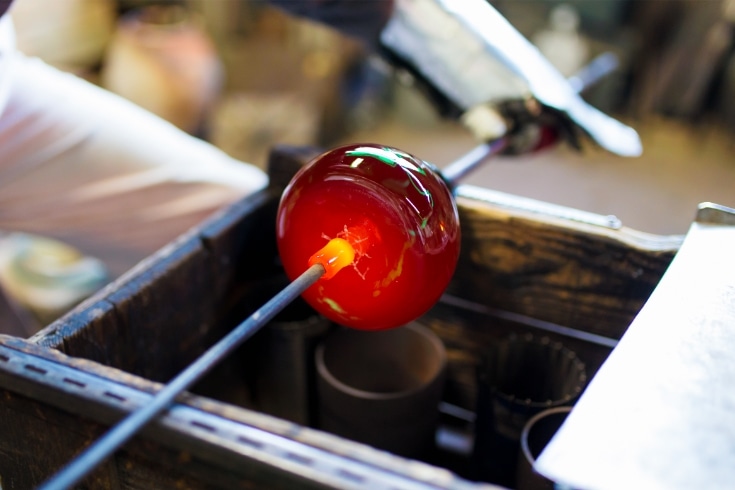
Glass blowing is a technique used to shape molten glass by blowing air into it through a tube to produce vases and sculptures.
To make blown glass, you will need molten glass, a blowpipe, a marver, and various specialist shaping tools.
Frit Glass
Frit glass is very versatile and is generally used by crafters to create jewelry and other decorative objects. The process involves using small pieces of glass, sometimes in powder form, and fusing them together. If you want to take up this craft, you’ll need a glass frit, a mold, and a kiln.
Dichroic Glass
Dichroic glass is very unusual because it can display two colors under certain lighting conditions. This form of glass is extremely popular in jewelry making because of its unique color-changing properties.
To make dichroic glass, you will need dichroic glass sheets, a kiln, and some cutting tools.
Beadmaking Glass
Beadmaking glass involves shaping glass into beads by melting glass rods around a device called a mandrel. Most crafters who are into bead-making use what they produce to make jewelry in a wide range of colors and designs.
To get into this field of glasscrafting, you will need a range of specialist tools, including glass rods, a torch, mandrels, and a bead release.
Slumped Glass
Slumped glass is widely used for making practical items for use around the home, such as dishes and bowls. This technique involves heating the glass in a kiln until it softens and slumps into or over a mold to give the piece the desired shape.
The materials you need for this glass craft are glass, a mold, and a kiln.
Cast Glass
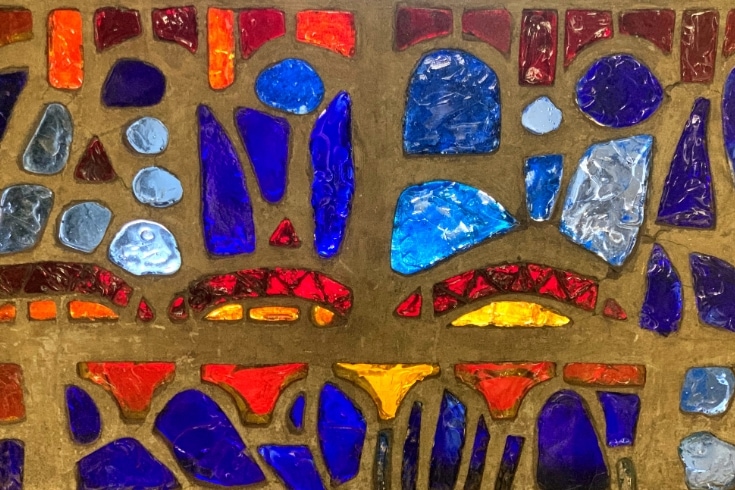
Cast glass is used to make intricate sculptures and other decorative items rather than practical pieces. The process involves pouring molten glass into a mold and allowing it to solidify as it cools to create your desired object.
This glass craft requires a mold, glass chunks or billets, and a kiln, so you’ll need a fair amount of space if you want to set up a cast glass workshop.
Etched Glass
Edged glass art is popular with crafters for creating decorative patterns on glassware and around mirrors by using caustic, acidic, or abrasive substances. The materials you need for etched glass crafting include glass, etching cream, and protective gear.
Stenciled Glass
Stenciled glass crafting is used to create defined, detailed designs on glass surfaces by using a stencil and then a medium like glass paint or etching cream.
The main materials needed for glass stencil crafting include glass, stencils, and etching cream or paint.
Foil Glass
If you have patience and a very steady hand, you might want to try foil glass crafting to create intricate and detailed stained glass art pieces using copper foil. To get into this form of glass crafting, you will need glass pieces, copper foil, solder, and a soldering iron.
What Are The Benefits Of Learning Ceramic And Glass Craft?
The benefits of learning ceramic and glass art are actually quite surprising. Of course, there’s the satisfaction you’ll get when you create something truly beautiful and unique, but you’ll feel less stressed, and your outlook could even be more optimistic.
Keep reading to learn more about the undeniable benefits of learning ceramic and glass art.
Increase Optimistic Outlook
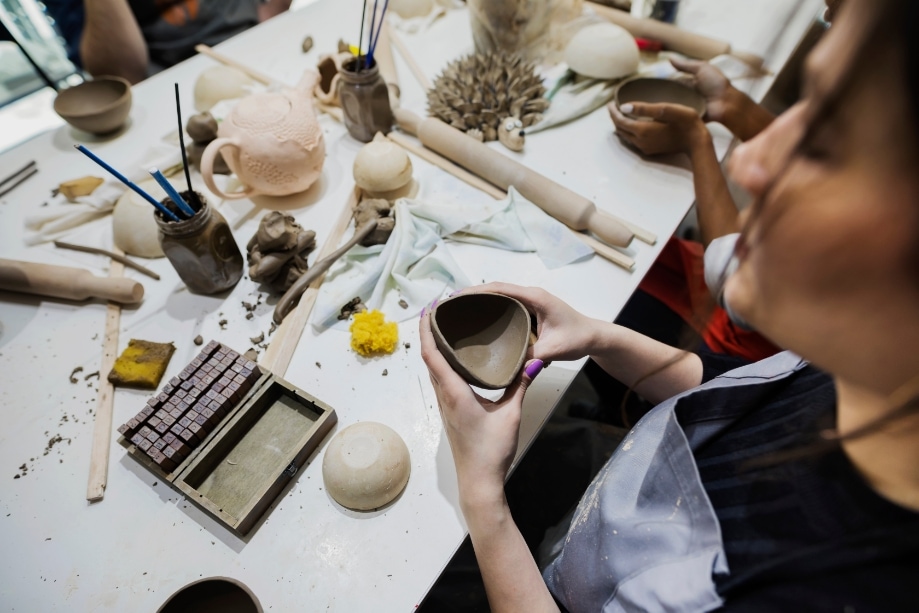
Taking up ceramic and Glass crafts can boost your feelings of optimism about life in general. When you create something unique and beautiful, it sparks feelings of accomplishment and pride, making you feel more positive.
This art form encourages you to look at the world from different perspectives, revealing unexpected beauty in everyday objects, enhancing your outlook on life, and ultimately contributing to an improved sense of well-being.
Improve Focus
Working with such detailed projects demands a high degree of concentration and precision, making you focus on the task at hand. That can help your ability to concentrate and focus, developing a skill set that will benefit you in many other areas of your life, including work and study, as I found when I took up making glass jewelry.
Exploring And Experimentation
Both glass and ceramic crafting offer huge opportunities for exploring and experimentation. You can experiment with a vast range of different materials, textures, and techniques to create pieces that are truly unique to you.
That process will boost your creativity, innovative thinking, and problem-solving skills and help you discover your own personal style and artistic expression.
Reduces Stress
Getting involved in working on a piece of ceramic or glass craft can act as a form of meditation, helping you to temporarily step away from the stresses and pressures of daily life. So, spending time working on your chosen hobby can help to reduce stress massively.
Exercises The Hands, Wrists, And Arms
Although it might not feel like it at the time, the physical act of shaping glass and molding ceramics can provide exercise for your hands, wrists, and arms. In fact, regular practice can even improve your muscle tone, coordination, and dexterity.
Encourage Sociability
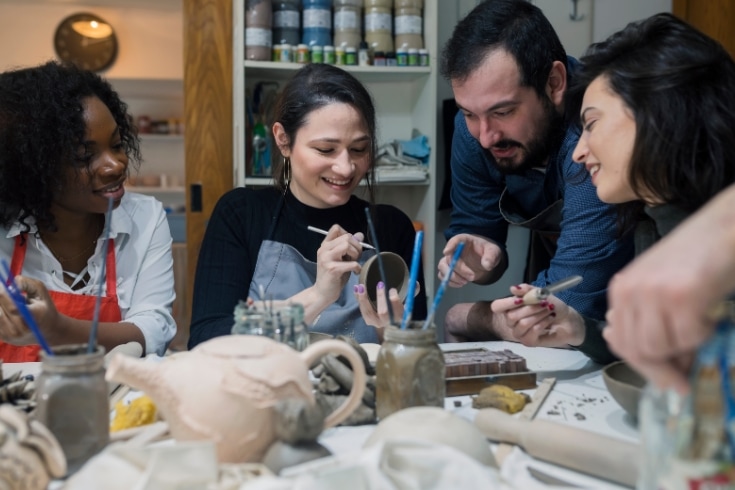
Ceramic and Glass crafts are often taught in community settings like workshops or classes, which provide an excellent opportunity to get together with others on a social footing. A shared interest in crafts can help you make new friends and reduce loneliness and isolation.
A Natural Pain Killer
People dealing with chronic pain conditions can become so engrossed in a creative task that they lose awareness of time and space. That heightened state of concentration can lead to the release of endorphins, your body’s natural painkillers, reducing your perception of pain.
Captures Memories
Ceramics and glass crafts allow you to tell your own personal stories in a tangible form that will last forever. Every piece you make as a gift has a sentimental value that will be treasured by the recipient and can never be bought in a store.
Improve Quality Of Life
Lastly, taking up ceramic and glass crafts can improve your overall quality of life! You’ll be less stressed, fitter, and more focused, and you might even see a reduction in chronic pain.
How Do I Learn Ceramic And Glass Arts?
To learn ceramic and glass arts and crafts, you’ll need to set aside a dedicated space in your home. You might even need a workshop and storage area, and a whole range of specialized tools, depending on what field you want to specialize in. Something you’ll almost certainly need is a kiln or some other means of heating the material you’ve chosen to work with.
Keep reading for our top tips on how to get into learning ceramic and glass arts.
Research And Gather Information
The first thing you need to do is start researching and gathering plenty of information about the ceramic or glass craft you fancy trying. Your research will likely show you what crafts are most suitable for your domestic setup, existing skills, and ambitions.
Take A Class
If you have zero experience in ceramics and glass crafts, we strongly recommend you sign up for a class or two. That will teach you the basics you need to get started and will help you progress more quickly than if you try to struggle alone.
Here are a few well-renowned courses in ceramics and glass arts you might like to check out.
Alfred University – School of Art and Design (New York)
Alfred University’s School of Art and Design is renowned for its programs in ceramics and glass arts. They might offer online courses, workshops, or tutorials in ceramics and glass crafts, which would likely be of high quality given their reputation in these fields.
Website: Alfred University – School of Art and Design
Penland School of Craft (North Carolina)
Penland School of Craft is well-known for its focus on craft education, including ceramics and glass. They occasionally offer online classes and workshops, which are widely recognized in the crafts community for their quality.
Website: Penland School of Craft
Corning Museum of Glass (New York)
The Corning Museum of Glass, while primarily a museum, does sometimes offer glassmaking courses and tutorials. They might have online options available, such as webinars, online courses, or video tutorials, particularly focusing on glass crafts.
Website: Corning Museum of Glass
Online Courses And Tutorials
If you don’t want to spend time attending courses during the day or evening, you might prefer to pursue online training in your chosen ceramic or glass crafting field. Taking this route could allow you to dip in and out of your course to suit you rather than physically attending lectures in real time.
Here’s a list of websites where you can find online courses, tutorials, and resources specifically for ceramic and glass crafts.
Coursera provides various online courses offered by various universities and other institutions, some of which could be related to ceramic and glass crafts.
Udemy offers courses in ceramic and glass crafts taught by industry professionals and instructors.
Skillshare offers lots of creative courses, including some in ceramics and glass crafts, often taught by experienced artists and designers.
The Ceramic School offers online courses specifically focusing on ceramics, including tutorials and live workshops.
Craftsy provides a range of courses in different craft disciplines, including ceramics and glass, with high-quality video tutorials.
YouTube has a multitude of free tutorials and demonstrations on ceramic and glass crafts from various artists and instructors. Take some time to surf on the platform and you’re sure to find what you want.
Join Workshops And Work With Experts
Many of the workshops are run by ceramics and glass crafts experts who can teach you everything you need to know about your chosen field.
Practice Regularly
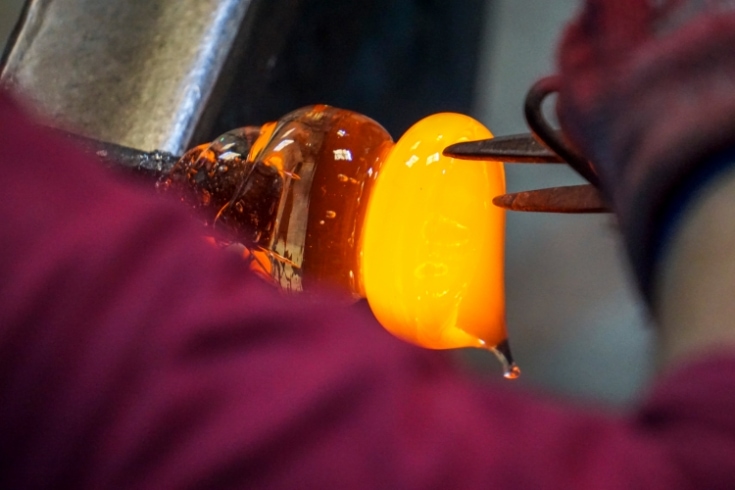
You won’t improve or achieve what you want to if you don’t sit down and practice your chosen craft regularly, so try to set aside some time every day or two to get out your tools and work on a project. If you can’t do that, spend time researching or attending online courses.
Seek Inspiration
Sometimes, you just can’t think of what to do next, and that’s a problem with any hobby. Take time out to look for inspiration for your next project by surfing the net, reading articles in magazines and online, and just looking at the world around you.
Experiment And Explore
Don’t be afraid to experiment and explore new areas in your chosen crafting field. You never know, you might just discover a brand-new technique you can use to create beautiful objects never seen before!
Learn From Mistakes
Although it’s painful at the time, the best learning tools you can come across are your own mistakes, and the same applies to other people’s disasters! When things go wrong, work out what happened so that you don’t make the same mistake twice.
Read Books And Manuals
There’s a plethora of very good books and manuals on ceramics and Glass crafts, and we strongly advise you to buy some of them. If you start a comprehensive library of books about your favorite crafting hobby, all that information will be there for you to dip into whenever you need to.
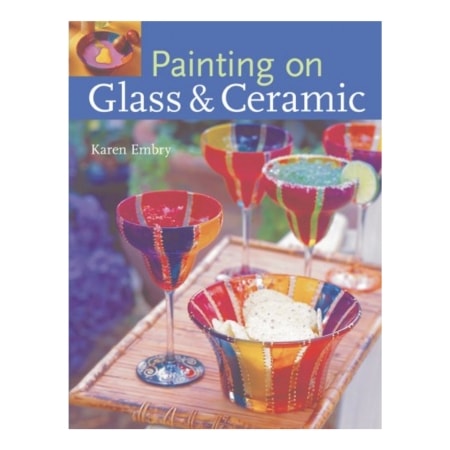
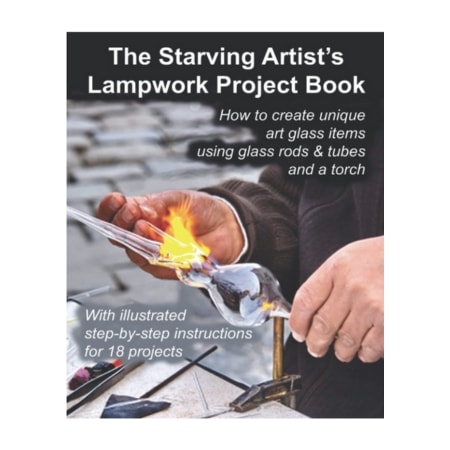
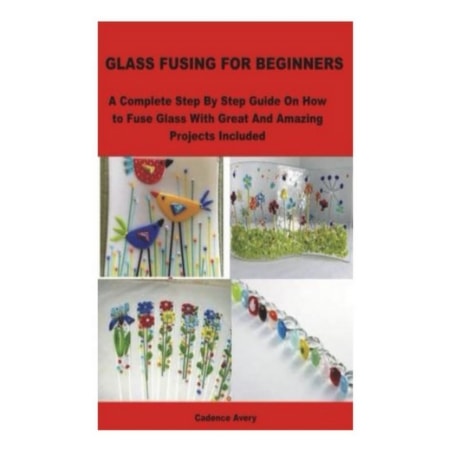
Attend Art Shows And Exhibitions
Art shows and exhibitions can be a fabulous source of inspiration, so keep an eye on industry websites and paper publications so that you don’t miss out. Many art shows have demonstrations by experts, which are also well worth seeing.
Stay Patient And Persistent
They say that Rome wasn’t built in a day, and the same applies to any form of crafting, especially something as technical and challenging as ceramics and glass crafts. Be patient and persistent to make gradual progress, and don’t take on challenging projects too soon.
FAQs
In this part of our guide, we answer some of the most commonly asked questions about ceramics and glass crafts.
What Are The Safety Precautions For Working With Glass Crafts?
When you’re working with glass, it’s important to take safety precautions to protect yourself from injury.
Wear protective clothing, including gloves and glasses, to avoid being injured by shards of flying glass and sharp edges. You should also ensure good ventilation and airflow throughout your work area and proper lighting so that you don’t strain your eyes or inhale dangerous glass dust.
What Are Some Famous Artists Known For Their Ceramic And Glass Works?
Some famous artists known for their ceramic and glass works include Dale Chihuly, Josiah Wedgwood, and Clarice Cliff.
Can I Sell My Ceramic And Glass Creations Online?
Yes, you can sell your ceramic and glass creations online. The best thing to do is to use one of the many online marketplaces and platforms that allow artists to sell their work to a global audience, such as Etsy and eBay.
What’s The Difference Between Stained Glass And Fused Glass?
Stained glass and fused are two different techniques used to create glass art.
With stained glass, the material is cut and fitted together to create a design that’s then held together with lead came or solder. In comparison, fused glass involves melting and layering glass pieces together in a kiln to create one piece.
How To Care For And Maintain Ceramic And Glass Art Pieces?
When it comes to caring for and maintaining your carefully crafted ceramic and glass art pieces, you must handle them with care and avoid exposing them to moisture and extreme temperatures. Keep your pieces of glass looking bright and clear by dusting them regularly and cleaning them occasionally with a soft, damp cloth.
Conclusion
As you can see, there are plenty of ceramics and glass crafts to choose from, whether you want to try your hand at making jewelry from glass and porcelain or you want to craft a beautiful bowl from clay.
All these crafts require a specific skill set, materials, and tools, so be sure to do plenty of research before you start. In addition, you might need to set aside a separate room in your home, part of your garage, or construct a workshop to hold your materials and tools.
When you begin, it’s a good idea to sign up for a few online courses and check out some of the excellent tutorials on YouTube to get a grasp of the basics. Be patient, learn from the experts, and take advantage of the knowledge you’ll find in local ceramics and glass crafting communities.
Once you become proficient at your chosen craft, you could give your pieces as gifts to your friends and family or even try selling your wares online to generate extra income.
What are you waiting for? Why not get started in the wonderful world of ceramics and glass crafts today?



